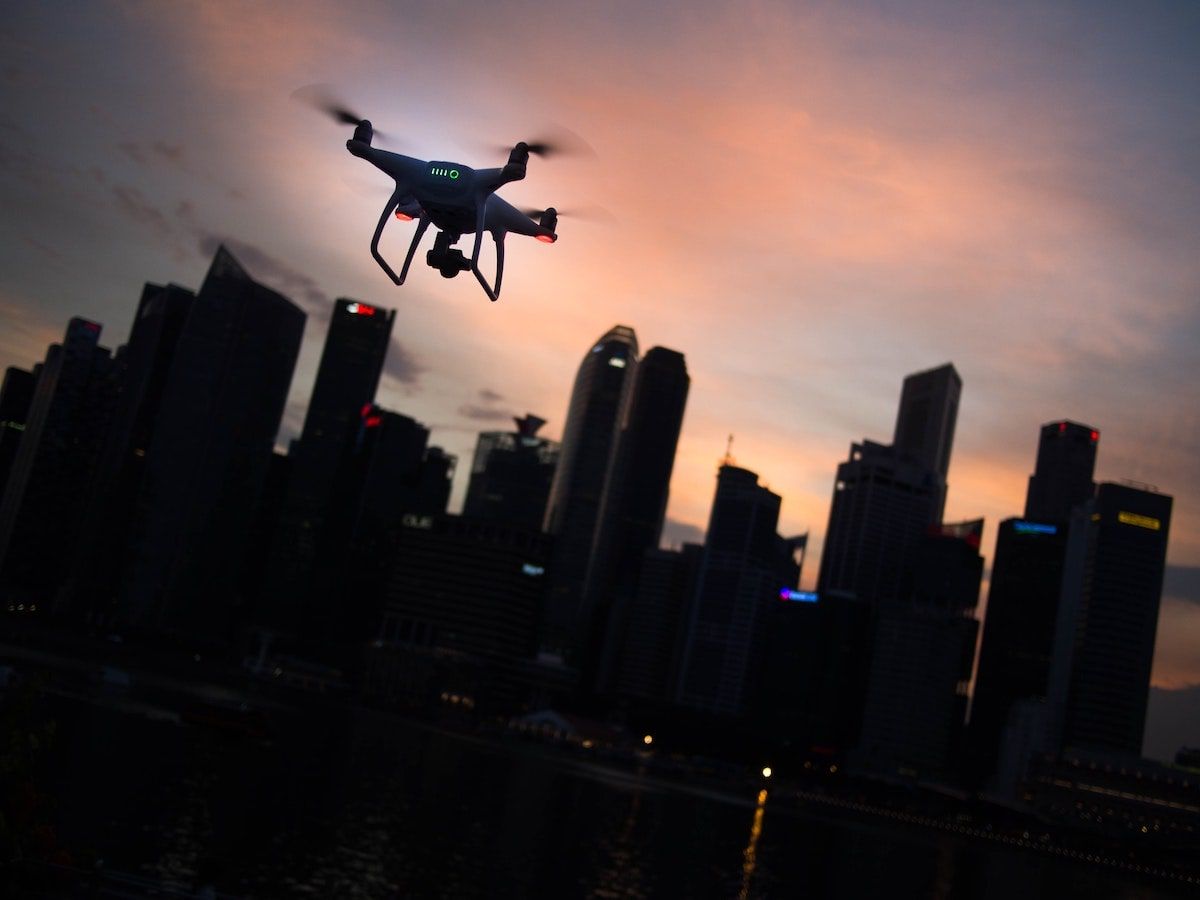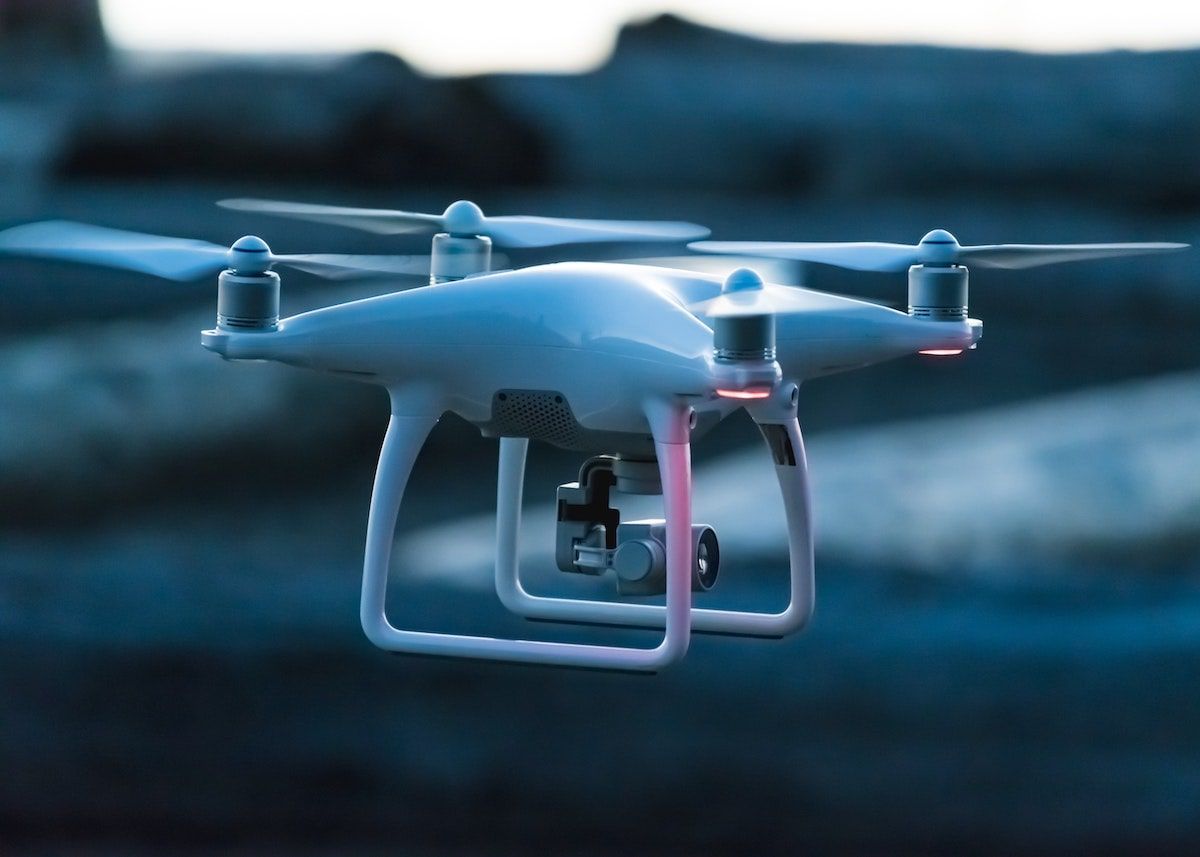What Is a Drone? Concrete Answers to the "What" & "How"
Hire film gear from local filmmakers.

Hire film gear from local filmmakers.
What's the first thing that comes to your mind when I ask you to name the current popular TikTok trend?
Did you think of the "Stay" dance trend – shot by an overhead drone?
Most of us are now aware of drones, the fastest-growing tool in filmmaking.
So, how about a proper introduction?
Here's a concrete overview of what exactly a drone is.
What is a drone?
A drone, in general, is an unpiloted aircraft, and it is a single or multirotor machine with propellers helping it to fly in any direction.
Drones are flying robots that can be controlled remotely or can work independently by software-controlled plans installed in their systems with inbuilt sensors using GPS.
They can be embedded with cameras, objects, parcels, weapons (yes, you've read it right!), etc., all depending upon their capacity.
Drones were first used in the military in Austria as they wouldn't put a pilot's life at risk and could work for long hours.
Nowadays, drones are used in all kinds of civilian work, such as weather-traffic monitoring systems, delivery services, photography businesses, and even for personal use.
Drones have now also found their way to cinema due to the efficiency, aerial view capturing, and safety that they offer.

Types of drones
There are different types of drones depending upon the purpose of usage, distance, and height they can travel.
Let's go over some of the most popular:
Single rotor helicopter
A single-rotor helicopter drone looks like a tiny helicopter and can run through gas and electric power. It has a single blade and can fly longer distances, and it is more feasible and stable as it wouldn't require more power.
You can use these drones to move items, usually heavy ones such as LIDAR systems used in land surveys, exploration of storms, and map abrasion.
Multi-rotor Drones
Multi-rotor drones are small and lightweight drones in the drone market. If you are an aerial view photographer, then this one's for you!
They travel a finite distance, with limited speed and heights but would work exceptionally for aerial view photographs.
They can travel for 20 - 30 minutes in the air with the cameras or any other flimsy cargo on it.
Fixed-wing drones
Fixed-wing drones can be thought of as aeroplanes. They have wings just like aeroplanes which give a lift to the drone making it more efficient.
These drones run on fuel, making them fly in the air for about 16-18 hours, just like planes. Due to their design and volume, they need runways to operate (for take-off and landing.)
These drones are usually used to ship cargo such as large equipment for scientists, food for NGOs and charities, and anything heavy and difficult to ship. Military coups also use them for strikes.
FPV Drones
First point view drones are similar to other drones in design, speed, and operation.
However, FPV drones are operated from the drone's perspective rather than the pilot's, meaning you can see from the drone camera's point of view (welcome to the era of flying humans).
FPV drone operators use live video transmission from the drone's camera. The live video is channelled and displayed to you through compatible monitors or video goggles.
FPV monitors can range from high- to low-end quality and prices – you can even use your smartphone here. However, if you want to embrace the flying-human-idea, you really should use video goggles to improve quality and experience.
FPV drones are often used for drone racing.
How do drones work?
Drones, often called UAVs, function through an Unmanned Aerial System (UAS), the entire software system built in UAVs.
Drones have fixed wings or either single or multi-rotors that are built for flight. These UAVs are controlled from the ground receivers.
Ground Control Station
Moving on, the Ground Control Station (GCS) is the central control unit that enables drones to fly and the entire system (UAS) to function.
These stations can be as large as large desks with several views or as small as smartphones, handy controllers, or even an app.
GCS are user-controlled or controlled through satellites. They can control the flight speed, height and distance of the drone, payload sensors, provide status readouts, plan missions, and bind the data link system.

Payloads and data links
Now, you may be wondering what payloads and data links are. Here is a brief about them.
Payloads are the maximum amount of weight that you can fit into a vehicle.
In this context, UAVs come in different sizes and can carry different weights depending on their capacity. So, CGS can also monitor the weight that a drone must carry.
Data links are servers/telecommunications which connect one location to another to transmit or receive digital data. Data links, in this context, allow the drone to communicate with the ground operator while they are on air.
Using radiofrequency technology, data links send information such as remaining flight time, distance to the target and from the operator, airspeed altitude, speed, and many more to the operator, making it easy to operate and estimate the journey.
Hence, in this way, drones are operated through continuous communication.

What are the downsides of drones?
Drones have provided many solutions to current problems but are criticized for various reasons. Some are listed below.
Privacy Concerns:
Many drones use cameras for operation, and these might take pictures and videos of people without their consent and intimidation, invading their privacy.
Laws have been formulated concerning the privacy policy, but some users still breach them.
The danger of crash:
All drones risk crashing, be it in the air or on the ground. They operate on batteries, so there's a chance of the battery dying while in the air.
Propellers spin faster to provide lift, and during this, there might be a high chance of falling from heights possessing risk to people and properties.
For example, drones crash into houses, people, buildings which can cause damage.
Restricted Space:
As drones fly at higher heights, there is a considerable risk of interrupting air travel routes putting flight journeys at stake.
Drones can also be small, making it difficult for pilots to track them on air traffic radars.
Sometimes, their presence may even prevent emergency flights to provide service in times of emergency, like in wildfire-stricken parts of the American Southwest.
Due to these issues, the Federal Aviation Administration (FAA) in the USA passed a law to register drones once you buy them.
Rent or subscribe to your next drone
Drones are upcoming technology, and not wonder if they will become as popular as smartphones in the next century.
While there are several concerns about flying a drone that you need to consider, they are amazing and efficient tools for filmmaking.
So, if you're ready to embark on an uplifting journey (get it?), you can rent or subscribe to a drone today.
Or, if drones aren't your thing, after all, you can always explore what other type of camera equipment there is to consider.
What is a Drone FAQ
What is a drone?
Drones are unmanned aerial vehicles (UAV's) that are multi-purpose rotors that can be flown in any direction and can be used for military, delivery, photography, etc.
What is a drone used for?
You can use drones for shipments of heavy and light objects, capture videos and photographs using cameras, carry weapons and delivery parcels, etc.
How does a drone work?
Drones are inbuilt with an Unmanned aerial system (software) and are operated from central gas stations by the ground operator.
Rent a drone from local creators.
Save up to 40%.
Global Coverage included.
https://images.wedio.com/images/listing_images/images/1949796/300x215/rent-dji-mavic-mini-on-wedio.jpg
https://www.wedio.com/en/drones
https://images.wedio.com/images/listing_images/images/1915165/300x215/lej_mavic_2_pro_med_pilot_p__wedio.jpg
https://www.wedio.com/en/dji-mavic-2-pro
https://images.wedio.com/images/listing_images/images/1915165/300x215/lej_mavic_2_pro_med_pilot_p__wedio.jpg
https://www.wedio.com/en/drones
https://images.wedio.com/images/listing_images/images/1934651/300x215/DSC05493-kopi.jpg
https://www.wedio.com/en/dji-mavic-air






















